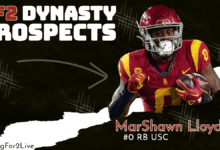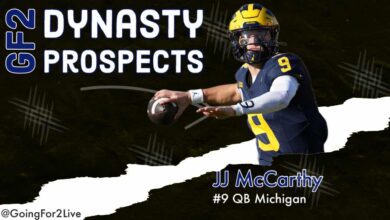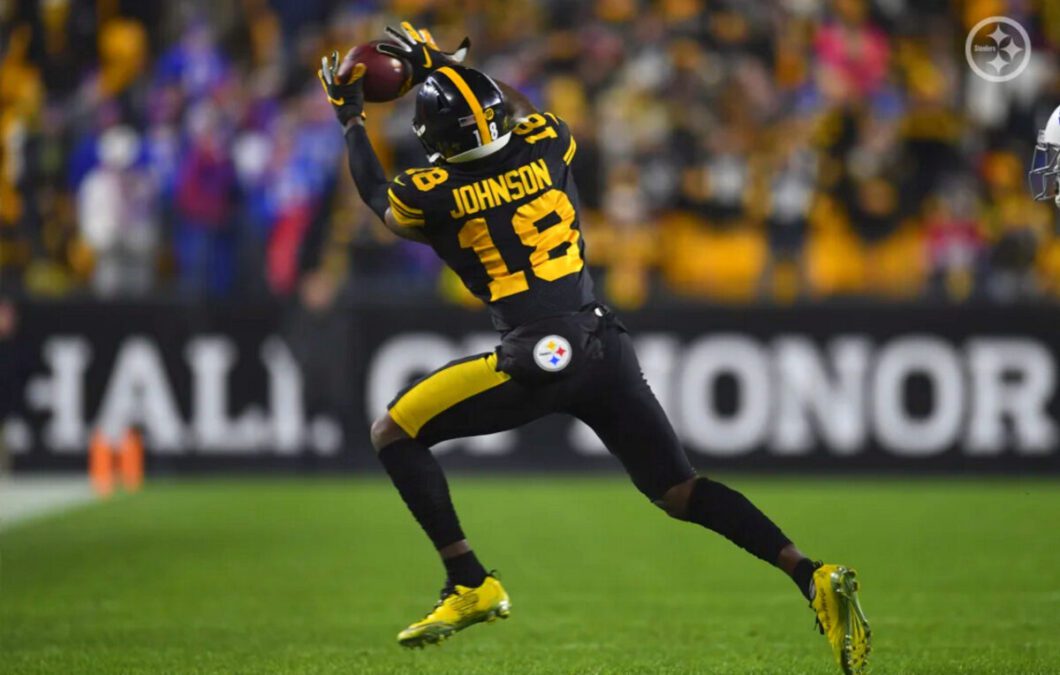
If you missed my first installment you can read it here: Fantasy Football: Draft Dos and Don’ts Part 1
This installment of Dos and Don’ts will concentrate on what “types” of players to draft. When I say type, I’m not referring to a player’s position, but what category he falls into. Is he a sleeper, a rookie, a career backup with a chance at a starting gig, or a player on a new team — be it from free agency or trade?
A successful draft will require some calculated risks, but taking too many risks could lead to disaster. My approach to a draft is to stay conservative in the high rounds by limiting myself to the “sure thing” player (if there is such a thing), and then as the draft progresses, I’ll take one or two high-risk/high-reward players. The late rounds are where I’ll finally start to take my “sleepers”. There are a couple dos and don’ts when drafting the middle to late rounds, which brings us to…
The Official Fantasy Football Draft Dos and Don’ts Part 2
Don’t: Draft too many players from your favorite team
We all have our favorite teams, and we all know our teams better than anyone else. We know the backup to the backup. We know the random free agents that were added during the offseason. We know the seventh-round rookie wide receiver, and of course, we know our “studs”. We root for these guys, we eat up all the preseason hype from the beat reporters, we read all the camp and OTA notes. When our veterans say, “I’m in the best shape of my life” or, “My ACL injury from last year feels great, and I’m ready for the season” we believe them, that’s what makes us fans — and it’s the same thing that will tank your fantasy team.

I’ve seen it time and time again. Fantasy team owners can’t help but take a player too high, or draft way too many players from his favorite team. You have to find a way to separate your head from your heart. It can be tough at times, believe me I know. As a 49ers fan, I was the proud owner of Vernon Davis and Colin Kaepernick in 2014. Needless to say it wasn’t my year. It happens to the best of us, and all you can do is to limit risk as best you can. My rule when drafting my own team is; No more than two fantasy starters and one sleeper. That’s it. That’s not to say you have to draft that many, but that’s your cap. This rule obviously doesn’t guarantee success (Davis and Kaepernick were the only two players I owned from the 49ers last year) but it’ll keep you from losing your fantasy league on draft day.
D0: Downgrade any player that is playing for a new team this year
We see if every off-season — big name players going to new teams. Sometimes the fantasy owner in us all salivates at the possibilities of certain players on new teams. Andre Johnson was one such player last year. We all thought, “If he was that good with such awful QBs in Houston, imagine what he’ll do with Andrew Luck.” I should have listened to my own advice in 2015 because I had Johnson ranked very high, but he fell flat on his face. Another more famous team switch would be DeMarco Murray leaving Dallas after a career year and going to the Eagles on a huge contract. Murray wasn’t even top 20 after being the best RB in 2014.
I’m not saying it never happens, but it’s rare that a big name player changes teams and repeats his success in the first year with his new team. That doesn’t mean these player aren’t draftable, but whatever rank you gave him on your personal draft board before he changed teams, should now be downgraded to some extent. Some other players that come to mind are; Jimmy Graham (Seahawks), Julius Thomas (Jaguars), and C.J. Spiller. I’m not telling you to avoid these players altogether, just don’t reach for them because “on paper” they should be better in their new uniforms.
Don’t: Draft a Rookie Quarterback
There is no doubt in my mind that Carson Wentz and Jared Goff will be drafted this year as “sleepers”, but I will not own either in any of my leagues. Why not? I mean Robert Griffin III, Cam Newton, and Andrew Luck were all great in their rookie years, right? They are also the only three rookie quarterbacks to finish in the top 10 overall in the last eleven years. That’s right, going back to 2004 there have been only three rookie quarterbacks to make a top ten fantasy impact — Russell Wilson was close at No. 11. I expect Wentz and Goff to both be viable starters in the future, but history says they won’t make an impact this year.
I know some of you are reading this thinking, “I’m going to draft one of them as a late round flier”. Really? So you would give up on a chance for this year’s DeVonta Freeman and potentially end up with this year’s Jameis Winston, who was the top rookie quarterback from last year and N0. 13 overall? Freeman wasn’t even drafted in most leagues last year so maybe you wouldn’t have landed him, but some other late round picks that were taken after Winston were Allen Hurns, Blake Bortles, and Jordan Reed. Hindsight is always 20/20, I know, but taking a rookie QB late instead of another skill position guarantees you won’t land one of those guys. Give yourself a chance at striking gold and leave the rookie QBs alone.
Do: Go easy on drafting “sleepers”
A good sleeper pick can mean the difference between winning and losing your fantasy season. They will only cost you a late-round pick, but could give you first round value, just don’t get carried away drafting them. To clarify, I define a sleeper as a low-risk/low-floor/high-ceiling guy that’s a little under the fantasy radar. I hear this term used incorrectly far too often. A sleeper is not an unproven guy that is going high in drafts based on his potential. I consider those high-risk/high-reward players, and those are two totally different things. A few years ago it was Vikings’ WR Cordarrelle Patterson into that category. A guy going in the third or fourth round (according to his ADP) is not a sleeper. The term itself gives away its definition — “sleeper”, meaning everyone is “sleeping on” said player, not wasting a high pick on him.
Now that we’ve defined the word and we are all on the same page, I’ll point out why it’s a bad idea to have too many of them.
There are usually between four to six bench slots in most of the leagues I’ve played in. You need four bench players to backup up your four skill player positions: QB, RB, WR, TE. Those four bench spots are off limits for sleepers. Anything over four is how many sleepers you should limit yourself to when drafting. I know what you’re thinking, “You told us not to draft a backup QB or TE?”. That’s right, I did, but for that one week that you’ll need to pick up a QB or TE, are you going to drop your starter? No, you’ll drop one of your underperforming wide receivers or running backs, and put your starting QB or TE on the bench. For this reason, it’s a good idea to maintain four spots for viable starters, the rest of your bench spots can be used for drafting sleepers and you can maintain that even as the season progresses. After your four bench spots needed to cover byes feel free to use them on sleeper picks or waiver wire “fliers”. Now, that doesn’t mean you absolutely have to use them on sleepers, but this rule will keep you from getting, what I call, “sleeper crazy”.
Love our content? Check out the GoingFor2 Live Podcast Network!
In the late rounds, pretty much everyone can be labeled a sleeper, but when drafting your minimum four viable bench players, stick to guys that will be starting for their respective teams. I’ll give you a real life example. Looking at the 2014 draft results from a league I run, Team A selected RB Andre Williams in the 10th round. Williams was a popular sleeper pick that year, and I had no issue with people taking him as one. The problem was that Team A took him as their first reserve RB. There were three players he passed on, that if I were in his position, I would have taken over Williams: Fred Jackson, Mark Ingram and Stevan Ridley. Obviously, the Ridley pick wouldn’t have worked out in hindsight because he had a season-ending injury — believe me, I know this first hand as I was the one who took him three picks later — but he was at least the starting tailback in New England before he tore his ACL and MCL. Ingram and Jackson weren’t amazing but they were viable. Andre Williams, as we all know now, isn’t even remotely viable and was a risk not worth taking.
[wysija_form id=”1″]ATTN Dynasty Commissioners: Do you want to do something cool for your league? How about a 1-hour live show dedicated to YOUR league? Team-by-team breakdowns, rankings, and more. For details and to book a show, visit: GoingFor2.com/plp.






